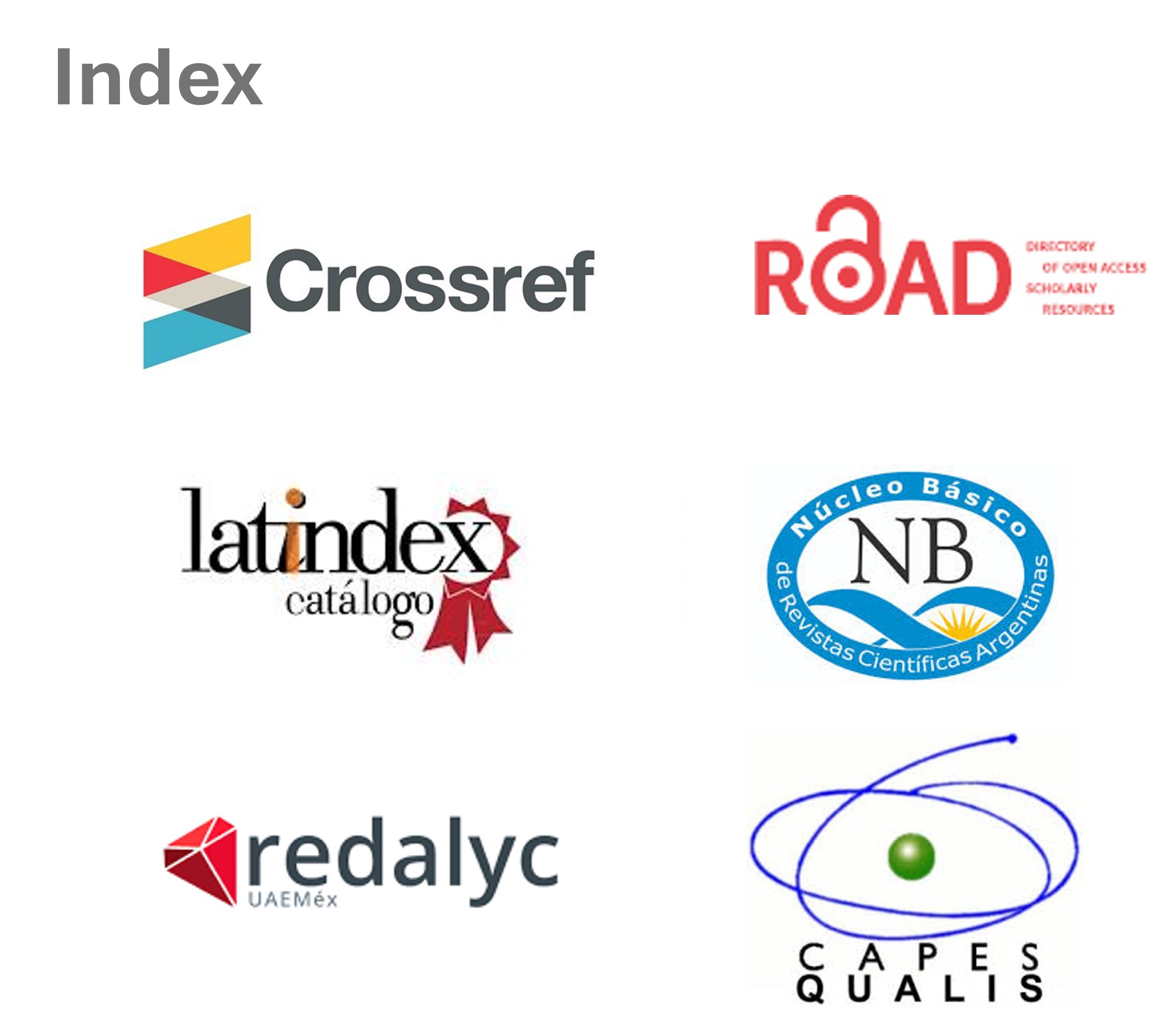Prácticas de ciencia abierta: instrumento para su análisis ilustrado con información de proyectos científicos argentinos
DOI:
https://doi.org/10.48160/18517072re48.63Palabras clave:
CIENCIA ABIERTA, ARGENTINA, BENEFICIOS, COLABORACIÓN, ACCESO ABIERTOResumen
Hacer ciencia abierta es colaborar con otros actores en la producción científica y compartir los resultados del proceso de investigación. Sin embargo, hay muchas dimensiones de apertura: al analizar iniciativas concretas de ciencia abierta, se encuentran una gran cantidad de formas híbridas de apertura. En este artículo identificamos y discutimos diferentes elementos de ciencia abierta y sus beneficios. Proponemos un marco bidimensional para caracterizar la apertura a lo largo de las etapas del proceso de investigación y argumentamos cómo diferentes prácticas de apertura en cada una de las dos dimensiones se asocian con diferentes beneficios potenciales. La primera dimensión agrupa distintas prácticas asociadas a la colaboración, mientras que la segunda a aspectos de acceso a los resultados compartidos
Citas
Alperin, J. P. (2015), The public impact of Latin America's approach to open access,Tesis doctoral, Stanford University. Disponible en: http://biblioteca.clacso.edu.ar/archivos_web_adj/239.pdf
Arnstein, S. R. (1969), “A ladder of citizen participation”, Journal of the American Institute of planners, 35, (4), pp. 216-224.
Aronson, B. (2004), “Improving online access to medical information for low-income contruies”, New England Jorunal of Medicine, 350, (10), pp. 966-968.
Arza, V., y M. Fressoli (2018), “Systematizing benefits of open science practices”, Information Services and Use, 37, (4), pp. 463–474.
Baden, T., et al. (2015), “Open Labware : 3-D Printing Your Own Lab Equipment”, PLoS Biology, 13, (3), e1002086.
Bauer, M. W. (2009), “The evolution of public understanding of science—discourse and comparative evidence”, Science Technology & Society, 14, (2), pp. 221-240.
Ben-David, J. (1960), “Roles and innovations in medicine”, American journal of sociology, 65, (6), pp. 557-568.
Benkler, Y. (2006), The wealth of the networks. How social production transforms markets and freedom, New Haven, Yale University Press.
Benkler, Y. (2016), “Peer production, the commons, and the future of the firm”, Strategic Organization,15, (2), pp. 264-274.
Benkler, Y. y H. Nissembaum (2006), “Commons-based Peer Production and Virtue”, The Journal of Political Philosophy,14, (4), pp. 394-419.
Bijker, W. (1997), Of Bicycles, Bakelites, and Bulbs. Toward a Theory of Sociotechnical Change Cambrige, Masachuset, The MIT Press.
Bollier, D. (2016), “Commoning as a Transformative Social Paradigm”. The Next System Project. Disponible en: http://www.operationkindness.net/wp-content/uploads/David-Bollier.pdf
Burns, T. W., O’Connor, D. J., y S. M. Stocklmayer (2003), “Science communication: A contemporary definition”, Public Understanding of Science,12, (2), pp.183-202.
Catlin-Groves, C. L. (2012), “The citizen science landscape: from volunteers to citizen sensors and beyond”, International Journal of Zoology, pp. 1–14.
Commission High Level Expert Group on the European Open Science Cloud (2016), A Cloud on the 2020 Horizon. Realising the European Open Science Cloud: first report and recommendations
Cribb, J. y T. Sari (2010), Open Science: sharing knowledge in the global century, Collingwood, CSIRO Publishing.
Dasgupta, P. y P. A. David (1994), “Toward a new economics of science”, Research Policy, 23, (5), pp. 487-521.
David, P. A. (2003), “The economic logic of open science and the balance between private property rights and the public domain in scientific data and information: a primer”, en J. M. Esanu y P. F. Uhlir (eds.) The role of the public domain in scientific and technical data and information, National Academies Press.
David, P. A. (2008), “The Historical Origins of ‘Open Science’: An Essay on Patronage, Reputation and Common Agency Contracting in the Scientific Revolution”, Capitalism and Society, 3, (2), pp. 1-103.
David, P. A. (2009), “Towards a Cyberinfrastructure for Enhanced Scientific Collaboration: Providing its ‘Soft’ Foundations May Be the Hardest Part”, Social Science Research Network Working Paper Series, 4, pp. 1-24.
Delfanti, A. (2010). “Users and peers. from citizen science to P2P science”, Journal of Science Communication, 9, pp. 1-5.
European Commission (2016), Open Innovation, Open Science, Open to the World, Bruselas, European Comission.
Evans, J. A. (2010), “Industry collaboration, scientific sharing, and the dissemination of knowledge”, Social Studies of Science, 40, (5), pp. 757-791.
Fecher, B. y S. Friesike (2014), “Open Science: One Term, Five Schools of Thought”, Opening Science, pp. 17-47.
Felt, U., et al. (2013), “Science in Society: caring for our futures in turbulent times”, Policy briefing, 50.
Franco-Avellaneda, M. (2013), “Museos, artefactos y sociedad: ¿Cómo se configura su dimensión educativa?”, Universitas Humanística, 76, pp. 97-123.
Franzoni, C. y Sauermann, H. (2014), “Crowd science: The organization of scientific research in open collaborative projects”, Research Policy, 43, pp. 1-20.
Fressoli, J. M. y V. Arza (2018), “Los desafíos que enfrentan las prácticas de ciencia abierta”, Teknokultura, 15, (2), pp. 429–448.
Fressoli, J. M. y V. Arza (2017), “Negociando la apertura en Ciencia Abierta. Un análisis de casos ejemplares en Argentina”, Revista Iberoamericana de Ciencia Tecnología y Sociedad, 12, (36), pp. 1–23.
Frickel, S. et al., (2010), “Undone Science: Charting Social Movement and Civil Society Challenges to Research Agenda Setting”, Science, Technology and Human Values, 35, (4), pp. 444–473.
Gagliardi, D., Cox, D. y Y. Li (2015), “Institutional Inertia and Barriers to the Adoption of Open Science”, en E. Reale y E. Primeri (eds.) The Transformation of University Institutional and Organizational Boundaries, Sense Publishers.
Gregson, J. et at. (2015), “The Future of Knowledge Sharing in a Digital Age: Exploring Impacts and Policy Implications for Development”, IDS Evidence Report, 125, Brighton, IDS.
Grubb, A. M. y S. M. Easterbrook (2011), “On the Lack of Consensus over the Meaning of Openness: An Empirical Study”, PLoS ONE, 6, (8), e23420.
Hu, M., et al. (2007), The innovation gap in pharmaceutical drug discovery & new models for R&D success, Kellogg School of Management.
Ioannidis, J. P. A. (2016), “Evidence-based medicine has been hijacked: a report to David Sackett”, Journal of Clinical Epidemiology, 73, pp. 82-86.
J. K. Hartshorne y A. Schachner (2012),”Tracking replicability as a method of postpublication open evaluation”, Frontiers in Computational Neuroscience, 6, pp. 1-14.
Jeppensen, L. B. y K. Lakhani (2010) “Marginality and Problem-Solving Effectiveness in Broadcast Search”, Organization Science, 21, pp. 1016-1033.
Kreimer, P. (2000), “Ciencia y periferia: una lectura sociológica”, en Monserrat. M. (comp.), La ciencia en Argentina entre siglos. Textos,contextos e instituciones, Buenos Aires, Manantial, pp. 187-201.
Kreimer, P., y M. Zukerfeld (2014), “La explotación cognitiva: tensiones emergentes en la producción y uso social de conocimientos científicos, tradicionales y laborales”, en Kreimer, P. et al. (coords) Perspectivas latinoamericanas en el estudio social de la ciencia, la tecnología y el conocimiento, Buenos Aires, Siglo XXI Editores, pp. 178–193.
Lagoze, C. (2014), “eBird: curating citizen science data for use by diverse communities”, International Journal of Digital Curation, 9, pp. 71-82.
Levin, N., y S. Leonelli (2017), “How Does One “Open” Science? Questions of Value in Biological Research”, Science Technology and Human Values, 42, (2), pp. 280–305.
Lundvall, B.-Å. (1992), National systems of innovation : toward a theory of innovation and interactive learning, Londres y Nueva York, Printer Publishers.
Mansell, R. (2013), “Employing digital crowdsourced information resources: Managing the emerging information commons”, International Journal of the Commons, 7, (2), pp. 255–277.
Martin, B. (2005), “Strategies for alternative science”, en S. Frickle y K. Moore (eds.) The New Political Sociology of Science: Institutions, Networks, and Power, Madison, University of Wisconsin Press, pp. 272-298.
Masum, H. y R. Harris (2011), Open source for negleted diseases: challenges and opportunities, Center for global health R&D Policy Assessment.
Mazzoleni, R. y R. R. Nelson (2007), “Public research institutions and economic catch-up”, Research Policy, 36, (10), pp. 1512-1528.
Merton, R. K. (1957), “Priorities in scientific discovery. A chapter in sociology of science”, American Sociological Review, 22, (6), pp. 635 - 659.
Molloy, J. (2014), Open training for open science. Disponible en:https://science.okfn.org/2014/12/21/open-training-for-open-science/
Molloy, J. C. (2011), “The open knowledge foundation: open data means better science”, PLoS Biology, 9, (12), e1001195.
Mowery, D. C. (1995), “The Practice of Technology Policy”, en P. Stoneman, (ed.) Handbook of the Economics of Innovation and Technological Change. Oxford: Blackwell, pp. pp. 513-557.
Nelson, R. R. (2004), “The market economy, and the scientific commons”, Research Policy, 33, (3), pp. 455-471.
Nielsen, M. (2012), Reinventing discovery: the new era of networked science, New Jersey, Princeton University Press.
Organisation for Economic Co-operation and Development (OECD) (2004), “Science, Technology and Innovation for the 21st Century”. Reunión de la OECD Committee for Scientific and Technological Policy at Ministerial Level, 29 y 30 de enero de 2004 – Comunicado Final.
Organisation for Economic Co-operation and Development (2015), Data-Driven Innovation: Big Data for Growth and Well-Being, Paris, OECD Publishing.
Research Information Network (RIN) / National Endowment for Science, Technology and the Arts (NESTA) (2010), Open to All? Case studies of openness in research, Londres, RIN y NESTA.
Robertson, M. N., et al. (2014), “Open source drug discovery–a limited tutorial”, Parasitology, 141, (1), pp. 148-157.
Schweick, C. M. (2011), “Free/open source software as a framework for establishing commons in science”, en C. H. E. Ostrom, (ed.) Understanding Knowledge as a Commons, Massachusetts, The MIT Press, pp. 277 - 309.
Silvertown, J. (2009), “A new dawn for citizen science”, Trends in ecology and evolution, 24, (9), pp. 467-471.
Stadelmann, B., et al. (2016), “Screening of the Open Source Malaria Box Reveals an Early Lead Compound for the Treatment of Alveolar Echinococcosis”, PLoS Neglected Tropical Diseases, 10, (3), e0004535.
Stodden, V. (2010), “Open science: Policy implications for the evolving phenomenon of user-led scientific innovation”, Journal of Science Communication, 9, (1), pp. 1-8.
Suber, P. (2003), “The taxpayer argument for open access”, SPARC Open Access Newsletter, visitado el 1 de febrero de 2019.
Surowiecki, J. (2004), The wisdom of crowds: Why the many are smarter than the few and how collective wisdom shapes business, economies, societies and nations little, New York, Anchor Books.
UN Independent Expert Advisory Group Secretary (2014), A world that counts: mobilising the data revolution for sustainable development, United Nations Independent Expert Advisory Group on a Data Revolution for Sustainable Development, United Nations.
Vessuri, H., Guédon, J. C., y A. M. Cetto, (2014), “Excellence or quality? Impact of the current competition regime on science and scientific publishing in Latin America and its implications for development”, Current Sociology, 62, (5), pp. 647–665.
Weber, S. (2004), The success of open source, Massachusetts, Harvard University Press.
Wells, T., et al. (2016), “Open Source Drug Discovery with the Malaria Box Compound Collection for Neglected Diseases and Beyond”, PLoS Pathogens, 12, (7), e1005763.
Whyte, A. y G. Pryor (2011), “Open Science in Practice: Researcher Perspectives and Participation”, International Journal of Digital Curation, 6, (1), pp. 199-213.
Wiggins, A. y K. Crowston (2011). “From Conservation to Crowdsourcing: A Typology of Citizen Science”, documento presentado en System Sciences (HICSS), Hawai.
World Bank (2015), “Open Data for Sustainable Development”, Public Note ICT 001, World Bank.
Yin, R. K. (2014), Case Study Research. Design and Methods. Fifth edition, Thousands Oaks, SAGE Publications.
Descargas
Publicado
Cómo citar
Número
Sección
Licencia
Derechos de autor 2020 Redes. Revista de Estudios Sociales de la Ciencia y la TecnologíaLos documentos aquí publicados se rigen bajos los criterios de licencia Creative Commons Argentina.Atribución - No Comercial - Sin Obra Derivada 2.5 https://creativecommons.org/licenses/by-nc-nd/2.5/ar/













